The signs of the warming climate are evident in a range of climate statistics. In this article, we look at the most recent data and explore the effects the changes are having on our butterflies, moths, and the places they need for survival.
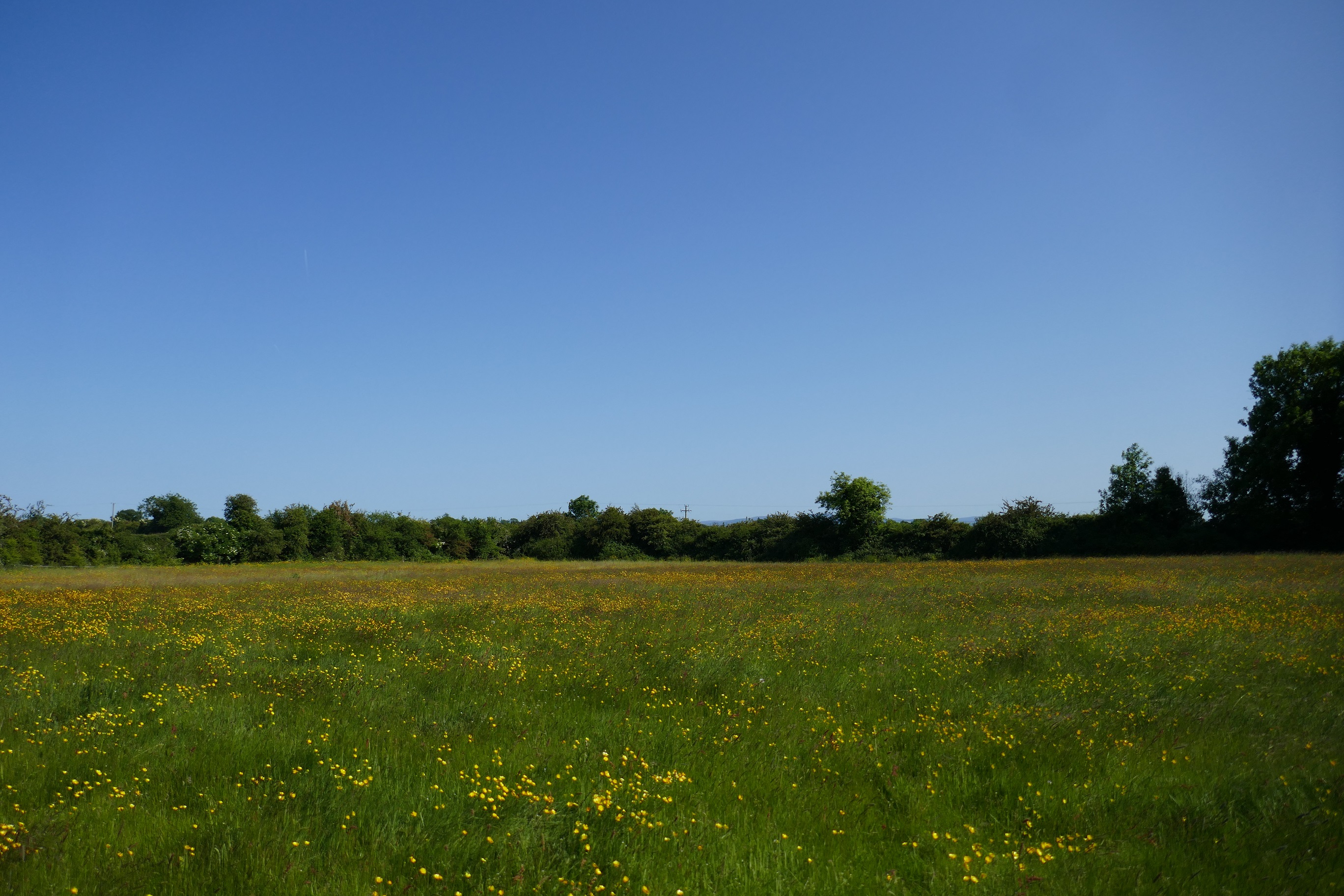
The world’s average temperature reached a new high on Monday 3 July, topping 17 degrees Celsius for the first time.
And according to Met Eireann, June 2023 was the hottest June on record in Ireland, breaking an 83-year-old temperature record. The increasing temperature is not a one-off, but a trend towards a warmer climate. Met Éireann climatologist Paul Moore states:
An average monthly temperature of greater than 16C has been seen in July and August but never before in June. June 2023 was well above normal due to persistent warm days and nights.
Further afield, Spain experienced extreme heat as early as April when temperatures exceeded 38 Celsius. According to the World Meteorological Organization, Europe is warming twice as fast as other continents and Ireland is feeling the effect.
According to Met Éireann’s TRANSLATE report, Ireland’s climate has shown changes in temperature and rainfall. Daily annual average precipitation has risen between the two baseline periods, 1961-2010 and 1991-2020. Ireland is wetter, with the western half of the country showing the biggest increases. Temperatures have risen throughout the country with the highest temperatures recorded in the centre of Ireland.
The report also deals with climate projections:
As the world warms it is clear that Ireland’s temperature and rainfall undergo more and more significant changes, for example on average Summer temperature could increase by more than 2°C, Summer rainfall could decrease by 9% while Winter rainfall could increase by 24%.
Butterflies can tell us a great deal about how climate is affecting our environment. Butterflies and moths respond quickly to changes in the environment because they are highly sensitive to temperature, precipitation and habitat change. Their rapid reproduction rate means that populations can rise very quickly when favourable conditions prevail but abundance crashes when conditions are less suitable.
Abundance is not the only response butterflies show to a warming climate. Distribution changes, earlier emergence, extended and shorter flight periods, changes to brood structure, and even appearance can occur in butterflies.
An extreme weather (EWE) is an event that is rare at a particular place and time of year. Extreme weather events, such as extreme heat, extreme drought and extreme rainfall are expected to be more common, and these will have an impact. I will look at extreme weather events first.
Extreme Weather Events
Met Éireann’s TRANSLATE report states that as the climate warms, extremes become more widespread and pronounced. A study by McDermott Long et al. (2017) looked at the impact of extreme climate effects on all life stages and the over-wintering period of UK butterflies. This study showed that the pupae of several single-brooded species (univoltine) are vulnerable to prolonged precipitation. This study also found that extreme heat during the period starting on November 1st and ending on February 28th has a negative impact on the population of the over-wintering stage of single-brooded species (whether this is the egg, larva, pupa or adult).
However, extreme heat during the adult life stage outside winter causes positive population change for 21% of species and extreme heat during the pupal stage outside winter is also positive, while during over-wintering it is associated with negative population change in 45% of species. The study discovered that extreme cold during the adult life stage of single-brooded butterflies has a negative effect on 35% of species.
The study looked at the impact of extreme climate effects on butterflies that produce two or more broods (multivoltine) annually. It found that extreme heat during over-wintering and extreme precipitation during the first and second generation adult life stages are the biggest cause of population declines in multivoltine species (67%, 58% and 50% of all multivoltine species affected, respectively). Extreme heat during the adult life stage is associated with positive population change in 42% of species. Drought plays a much more important role in multivoltine species than in univoltine species. Drought negatively affects 50% of species during their second larval life stage but has a positive impact on 25% of the species during their first ovum life stage.
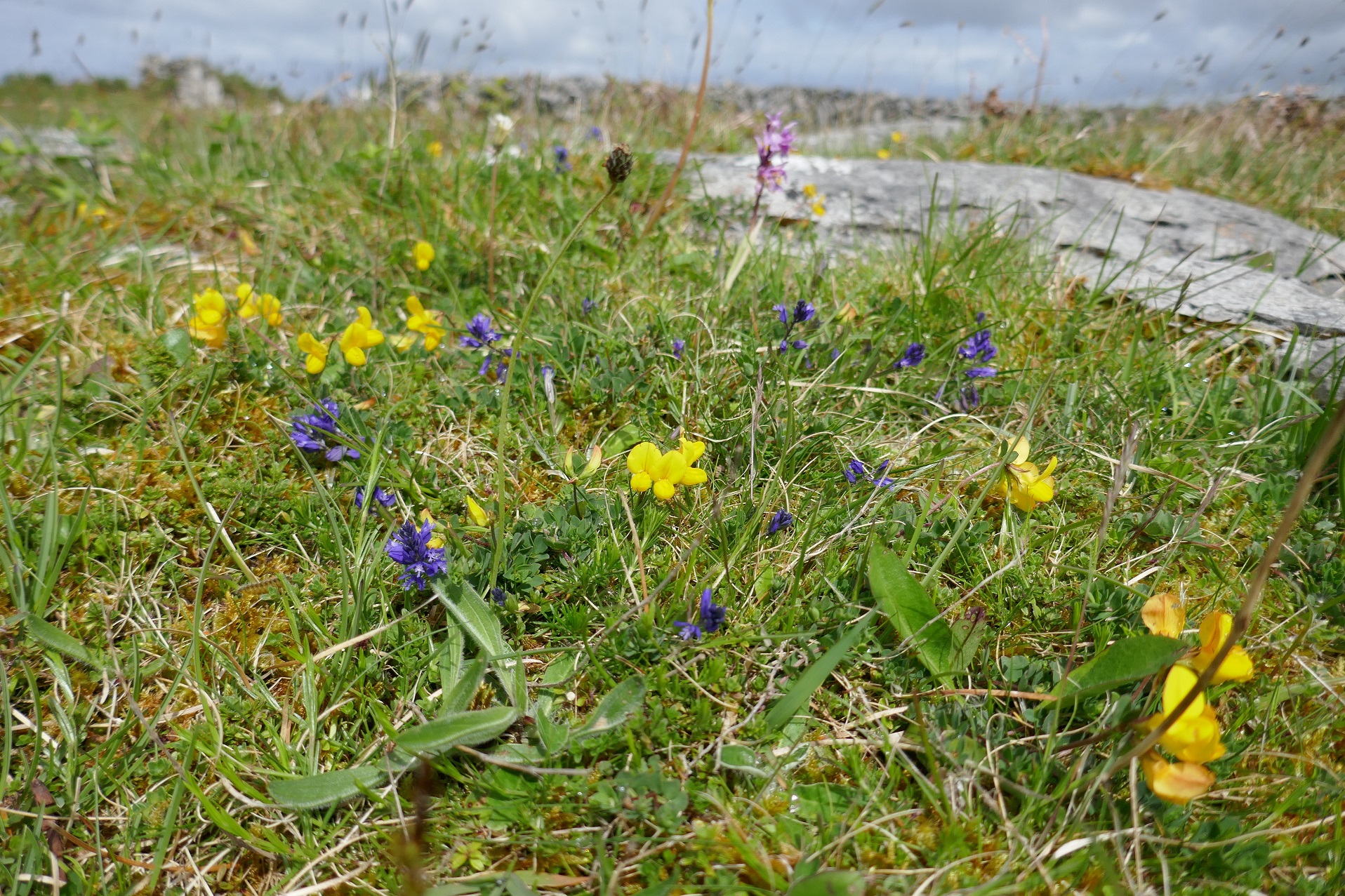
In summary, butterfly population changes are primarily driven by temperature extremes. Extreme heat is harmful during over-wintering periods and beneficial during adult periods (outside winter) and extreme cold had opposite impacts on both life stages. Harmful effects were identified for extreme precipitation during the pupal life stage for univoltine species.
Distribution Changes
One species that has undergone a range change is the Comma butterfly. In fact, it had not been recorded in Ireland before 1998.
In The Irish Butterfly Book (2021), I explored the role of climate change in its colonisation of Ireland since 2000, a process that has accelerated since 2014:
Asher et al. (2001) and Thomas and Lewington (2014) state that climatic factors appear to be relevant, particularly climate warming. The factors driving the recent expansion of range into Ireland are likely to be a warming climate and closeness to an expanding British population. Unlike the gregarious larvae of the Small Tortoiseshell and the Peacock, which bask communally to heat up, solitary Comma larvae are not able to raise their own body temperature above that of their surroundings. This dependence upon external temperature might explain the absence of the Comma from Ireland in the past when the climate was cooler.
The Comma usually breeds on Stinging Nettles, on mainly unshaded plants, especially using plants growing in damp soils near trees and shrubs, where the Comma benefits from warmth, shelter and succulent foodplants. In May 2023 I confirmed its use of elm in Ireland, probably Wych Elm Ulmus glabra, as a foodplant for the caterpillar. The Wych Elm and Stinging Nettle are the optimal foodplant choices for successful larval development (Braschler and Hill 2007).
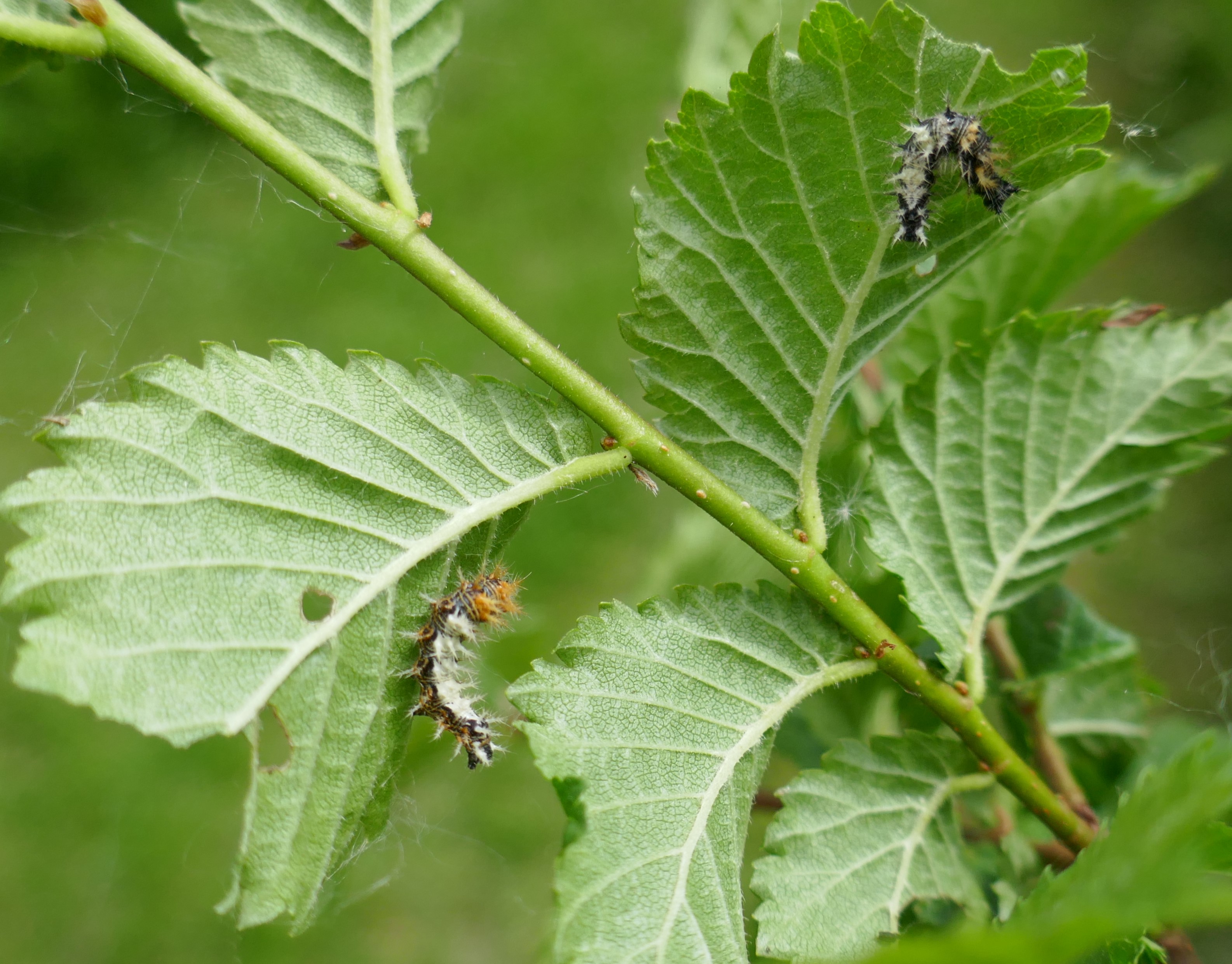
We have gained other species, and species already here that had a limited range here are extending their Irish range. Moths such as Blair’s Shoulder-knot (first recorded in 2002) and the White Satin moth are colonists extending their range, while moths like the Yellow-tail and Marbled White-spot, formerly quite restricted in Ireland are in expansion mode. The Bedstraw Hawkmoth might be colonising Ireland, with adults and larvae being recorded in various places across the country. Lime Hawkmoth is another recent arrival, appearing now to be well-established in parts of Dublin, breeding on lime trees on tree-lined roads.
Earlier Emergence
One way of tracking the response of living things to climate events is the study of phenology. Phenology is the study of periodic events in biological life cycles and how these are influenced by seasonal and interannual variations in climate, as well as habitat factors.
In Ireland, the Orange-tip, largely a spring butterfly, usually starts to fly shortly after the end of the first week in April until the end of June. Sometimes an early July sighting is made. The peak flight time is in the first half of May. It has one brood in Ireland and throughout its vast European range. It is likely that some of the pupae over-winter twice, a strategy to cope with prolonged inclement conditions during their flight period.
The trend in Britain, where records of butterfly phenology are more extensive than in Ireland, is toward earlier emergence. Here I look at just one example of earlier emergence trends. Throughout most of the twentieth century, the first British Orange-tip of the season was recorded, with very few exceptions, in April.
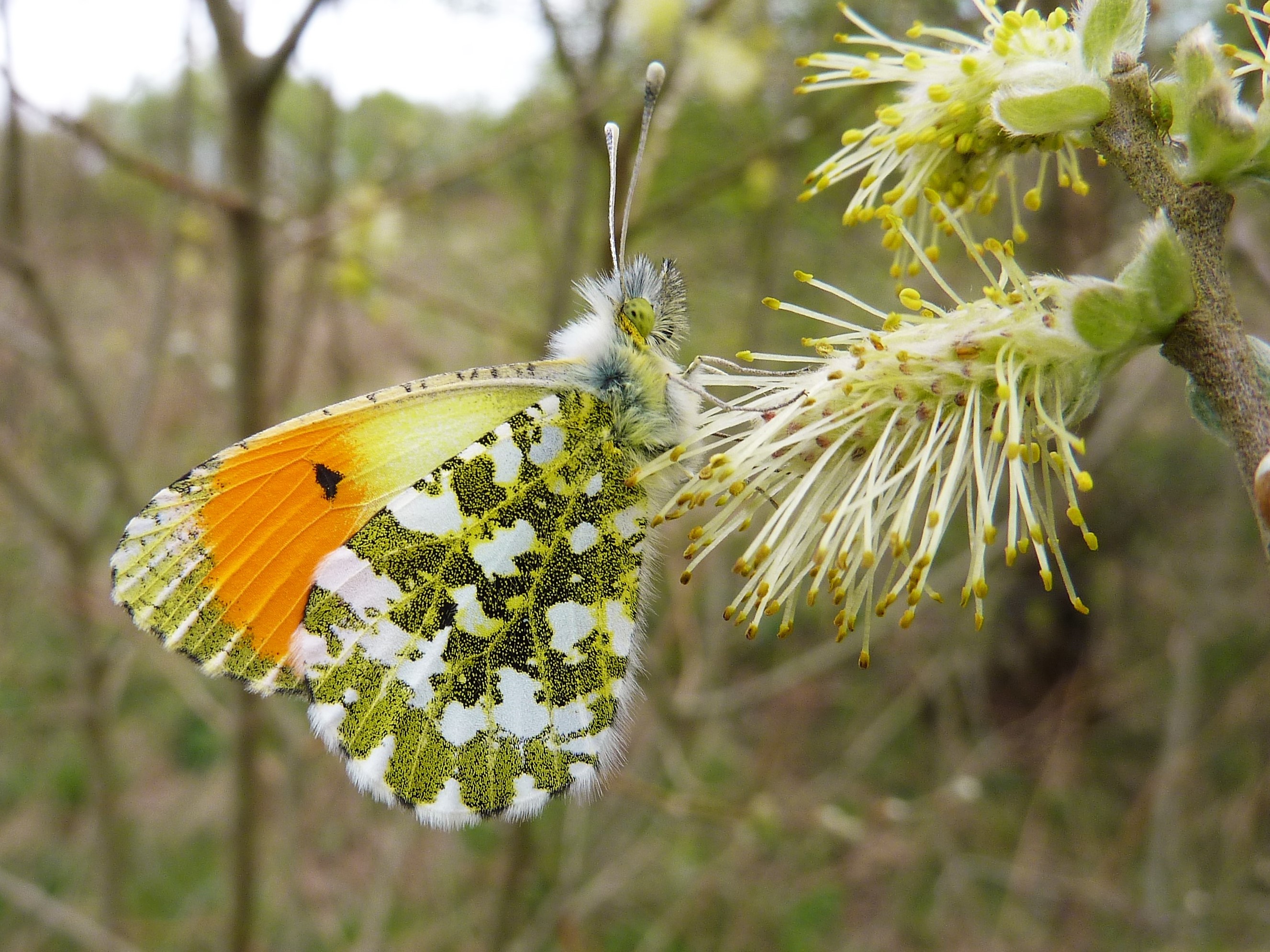
But since 1989, most of the earliest emergences have been in March (Oates 2015). The average first sighting date 2011-2021 for the Orange-tip in Britain, compiled by Butterfly Conservation UK, is March 17th. This indicates the impact of warmer springs. The average first sighting date 2013-2017 for the Orange-tip in Ireland, compiled by Butterfly Conservation Ireland, is later, on April 10th, reflecting the cooler temperatures here. However, the mild spring of 2019 saw an Orange-tip recorded on March 29th, in County Donegal, while in 2021 the first Orange-tip was recorded, again in Donegal, on April 3rd.
The Orange-tip, like several other butterfly species, passes the winter in the pupa, so it is well placed to emerge earlier when spring has sustained warmth.
Earlier adult emergence dates are being recorded for several species such as the Marsh Fritillary, Large Heath, Narrow-bordered Bee Hawkmoth and others.
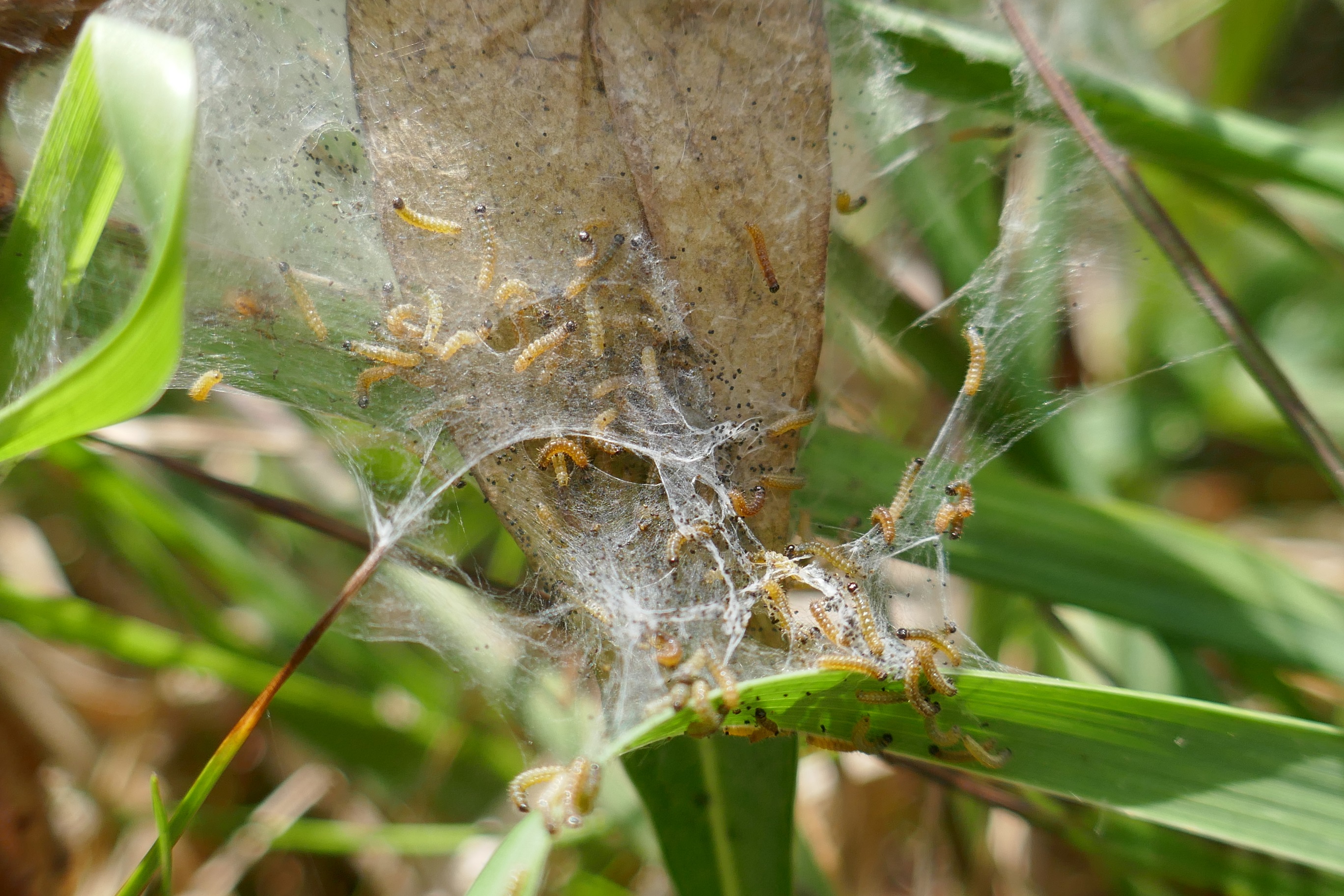
But earlier life cycle events are not limited to adult emergence dates. The hatching dates of larvae might also be taking place earlier than was recorded in the past. On June 29th 2023, I found two Marsh Fritillary nests containing newly hatched caterpillars in Lullybeg, in County Kildare. Judging from the leaves they consumed, hatching occurred a few days before June 29th. This hatching date is up to one month earlier than recorded in this area in the past.
Extended and shorter flight periods and abundance
The effect of increased warmth is already being expressed in the lives of our moths and butterflies.
The Red Admiral, a migrant, typically arrives in Ireland in March and departs during autumn. In some places, like Howth, County Dublin, it is remaining during winter, taking advantage of the warmer winters to breed on nettles that now survive because winter frosts rarely occur there now.
Sustained summer warmth and dryness do not suit all species. The Small Blue breeds on just one foodplant that grows on thin soils, such as sandy soils. The plant, Kidney Vetch, can shrivel during drought, which means the larvae will starve or be under-sized. Droughts have already stricken the species, such as when the prolonged drought in 2018 was followed by a population crash on the sand dunes at Portrane, County Dublin, in 2019, and presumably elsewhere.
Changes to Brood Structure
Brood structure refers to how many generations an animal can produce per year. In Ireland, most butterfly species produce one generation a year. Some can produce two or even three generations, while some species, such as the Red Admiral, are continuously brooded.
The Small Copper, typically a bivoltine butterfly in Ireland, appears to benefit from sustained warm weather. This butterfly can fly in three generations in Ireland in years with warm summers, and in two broods when the summer is cooler. We have seen third broods in recent years, such as in 2021 when the recorded flight period was May 7th to October 9th. It appears that only two generations flew in 2020 when summer was cooler and the recorded flight period was May 8th to September 6th.
A species that might be vulnerable to increasing warmth and decreasing summer rainfall is the Small Tortoiseshell.
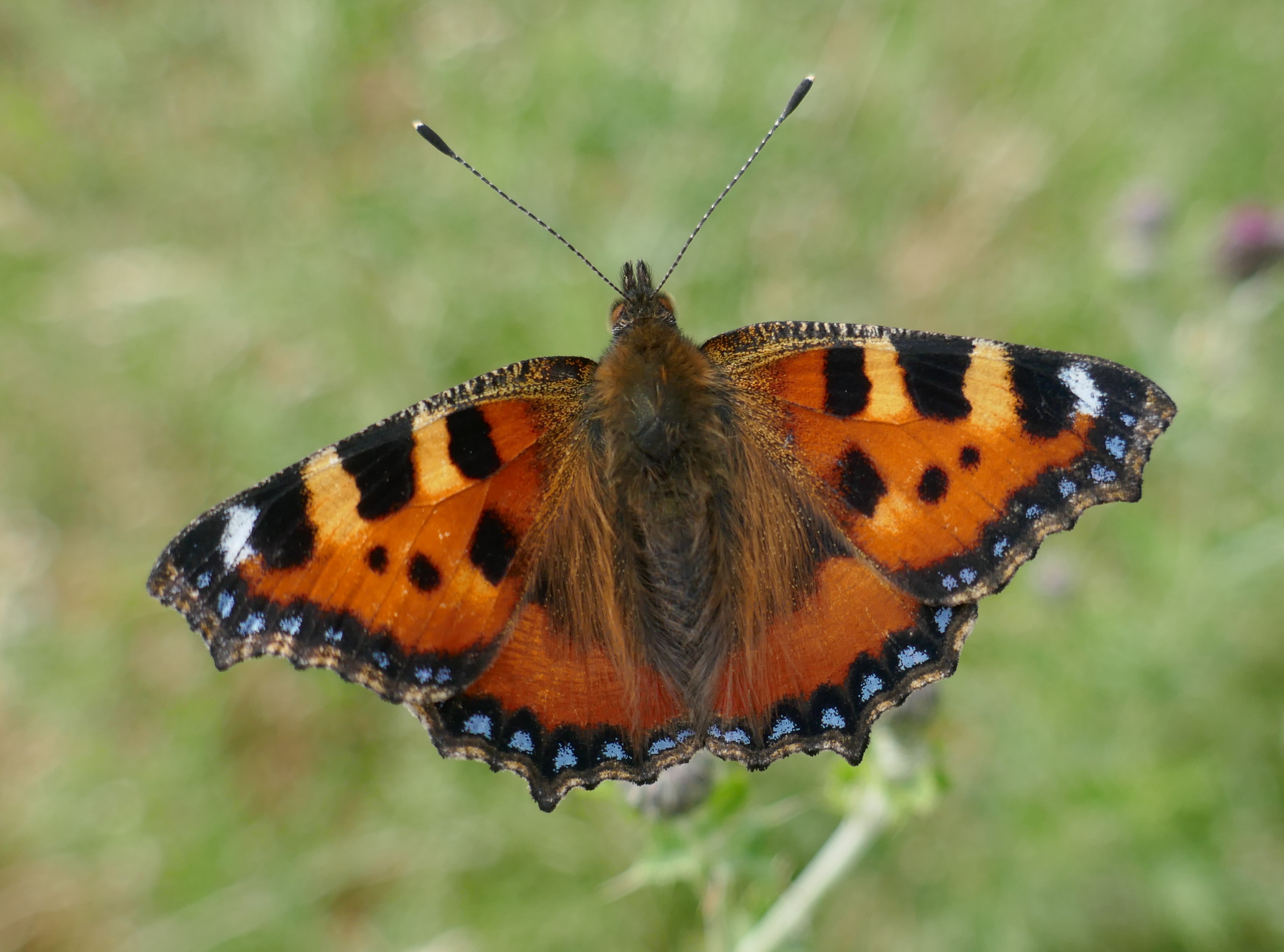
The Small Tortoiseshell can fly in two or even three generations, but the second might be a partial generation while any third brood will be very small. Adult Small Tortoiseshells can usually be found flying from March-May (over-wintered adults), June-July (first brood) and late August-early October (second brood, small third brood). All final brood Small Tortoiseshell butterflies enter hibernation, often in houses.
An interesting phenomenon has been recorded in a Small Tortoiseshell hibernaculum in St Albans, Hertfordshire, where the butterfly went into early hibernation in some years (Hull, 2019). In 2017 and 2018, all the Small Tortoiseshells that hibernated in Malcolm Hull’s unheated shed were hibernating by July 7th and August 5th, respectively. In 2016, the last five did not enter hibernation until mid-October. In 2017 and 2018, the butterfly had effectively abandoned the second generation and entered reproductive diapause. The weather during June and July 2018 was hot and dry and the Stinging Nettles needed for breeding may have become unsuitable.
Frank Smyth, a very experienced observer has noted the absence of Small Tortoiseshells at Howth, County Dublin during August and September in some years but their reappearance the following spring. The butterfly may be skipping its second generation at Howth too, and this may occur in other dry east coast locations during dry summers. A skipped second generation might also occur during cold summers. This ability to modify its brood strategy suggests a level of adaptability, much needed by a widely distributed species in an era of climate change.
Changes in appearance
Butterflies, moths and other insects, such as dragonflies, show morphological responses to climate and weather conditions. Thus, some butterflies produce smaller offspring during or following drought. Common Blue butterflies that emerge in summer following drought are often greatly reduced in size. This is the result of a reduction in the quality and or the amount of edible foodplant. In years with good rainfall and warmth, adults are larger.
The Dark Green Fritillary (to take one example) present in Ireland, Scotland and other cool climates are darker than their counterparts in sunnier, warmer climates, an adaptation to overcast, cool conditions. As our climate becomes sunnier and warmer, it is likely that our darker Dark Green Fritillaries will become paler.
A Climate Warming Success
One butterfly that has successfully tracked climate change is the Comma. This butterfly is a fascinating example of a butterfly whose development and brood structure are adapted to daylight length. Increasing hours of daylight see eggs laid in late April and early May producing direct breeding adults that breed soon after they emerge from their pupae in June and July. These are paler, well designed for bright sunshine. Eggs laid later in spring produce mainly dark adults which postpone reproduction until the following spring. Even more intriguing is the ability of the caterpillar to switch to producing the adult form best adapted to the conditions. Swedish research found this is influenced by two main factors: the length of daylight experienced by developing caterpillars and whether days become shorter or longer as they grow (Nylin, 1989).
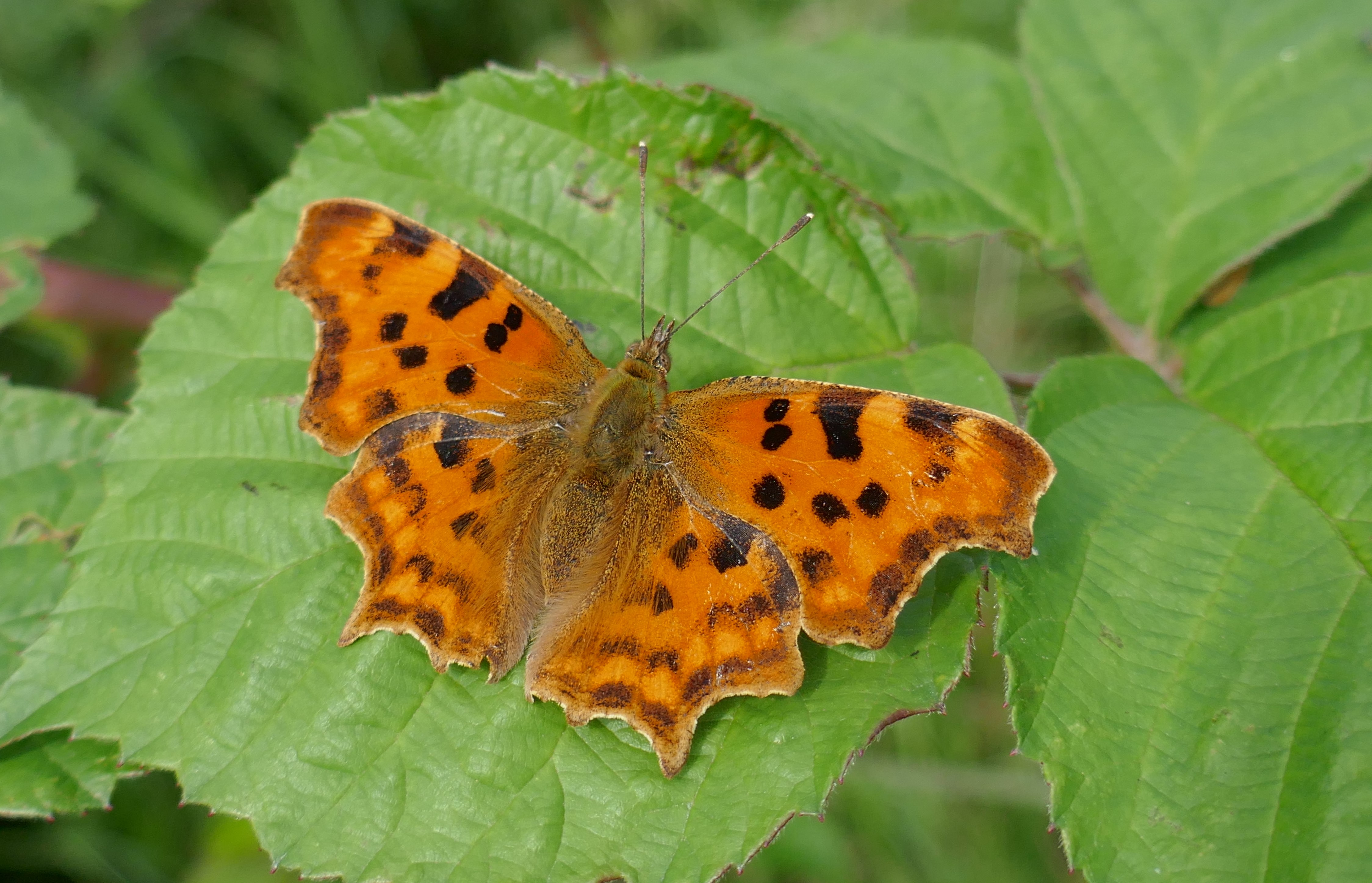
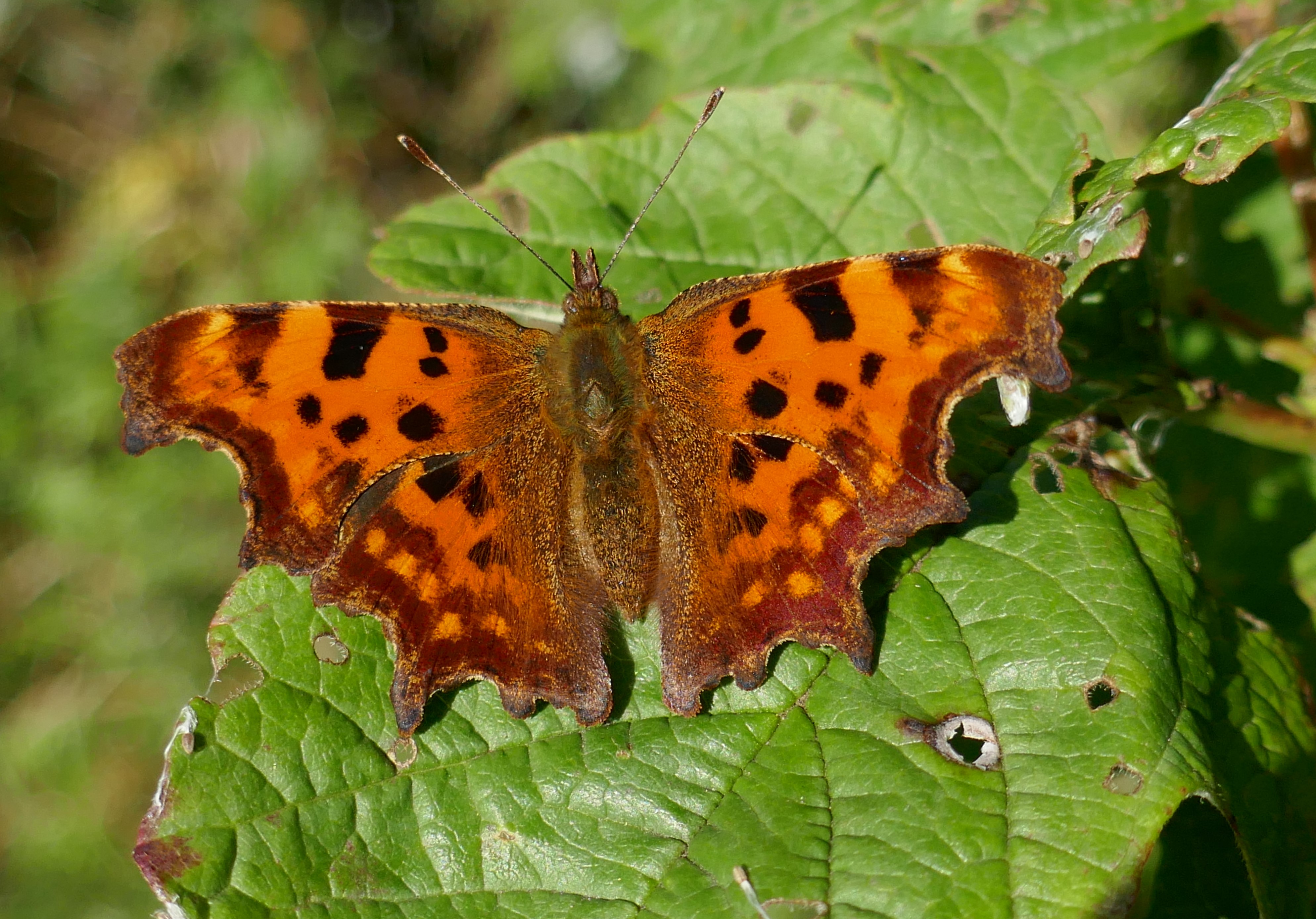
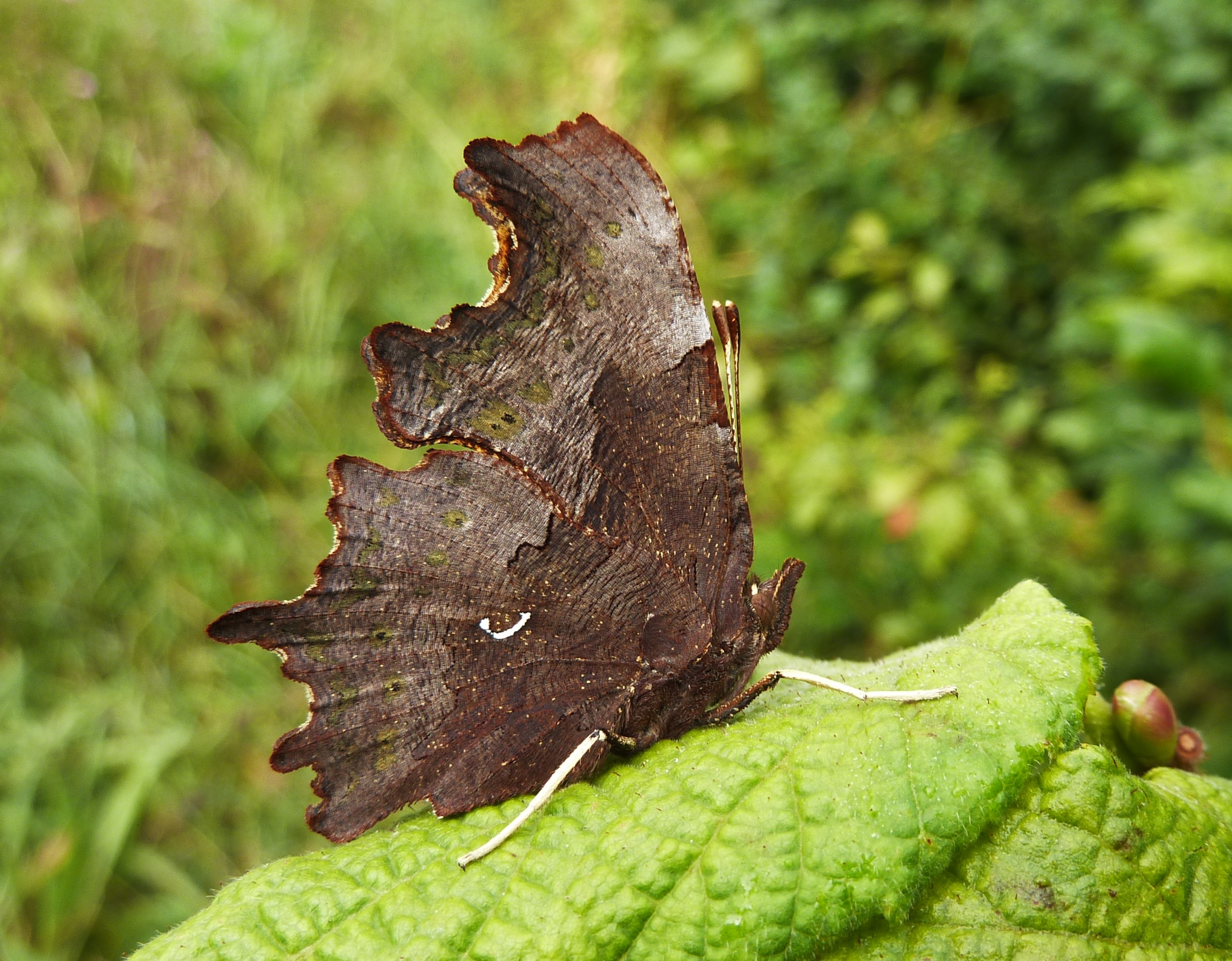
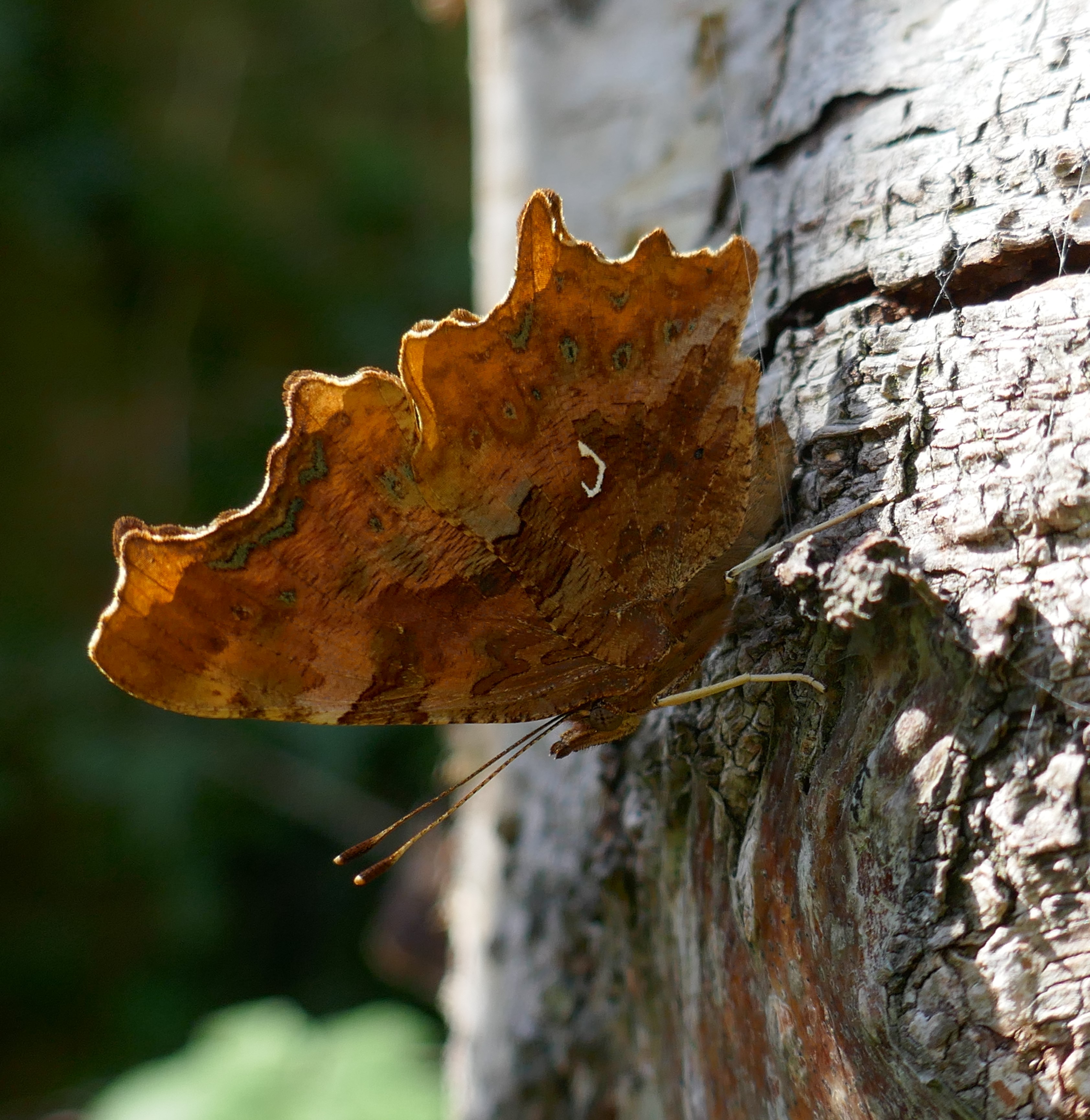
I suspect the Comma’s development might also be accelerated by increasing night warmth. It is known that caterpillars can develop into the direct breeding form even when day-length is declining if the temperature is warm, and they are feeding on very nutritious food (Thomas and Lewington, 2014). In captive breeding indoors during spring, I observed Comma larvae feeding at night, in darkness, likely benefiting from indoor warmth. Despite darker conditions indoors, all the larvae I reared in spring produced pale, direct-breeding adults. The adults hatched shortly before and around 18 June 2014. Warming night temperatures may increase the percentage of direct-breeding Commas hatching in June and July, even when day length is declining after the summer solstice (June 21st).
Furthermore, warmer daytime spring weather arising from climate change will likely result in more direct-breeding adults for two reasons: earlier adult emergence and faster development of eggs and larvae. Over-wintering adults emerge earlier if spring weather is warm and sunny, and breeding may occur earlier, followed by earlier egg-laying on earlier developing nettles, earlier hatching and faster development of larvae under warmer conditions, meaning that more larvae will be developing when daylight is still increasing.
The direct-breeding adult Commas (light form) that hatch from pupae in June and July reproduce and die weeks before August ends. Their offspring develop mainly during July, August and September, when day length is declining, and nettles are less lush than they were in spring. The resulting adults are dark and these delay breeding until spring after hibernation. However, Nylin (1989) states that some exceptions occur with some dark male adults breeding in summer (under laboratory conditions) and some pale adults over-wintering (Eeles, 2019). (Nylin also found that only dark (normal form) adults are produced in the wild in Sweden.)
The Future
Braschler and Hill (2007) investigated the Comma’s expansion and point out that polyphagy (the ability to use several foodplant species) may enhance the ability of species to track climate change although the females sometimes chose suboptimal foodplants (Gamberale-Stille et al. 2014). There are species (such as the Small Blue, Small Tortoiseshell and Marsh Fritillary) that use just one foodplant, leaving them vulnerable to changes that negatively affect their food. Prolonged summer drought will affect many moisture-dependent species, such as the Ringlet and Green-veined White. No longer will these be the abundant, widespread species we know today.
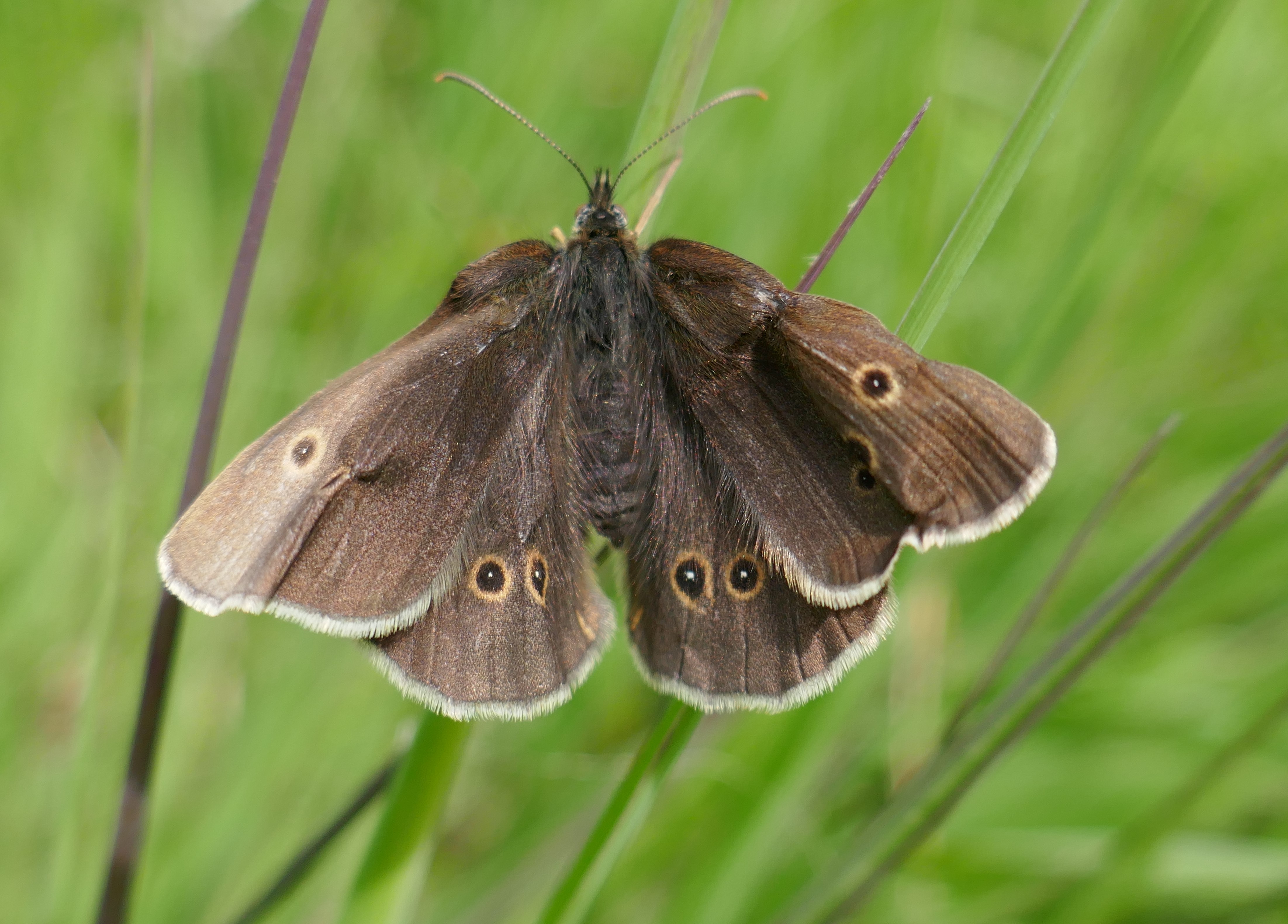
There is evidence that climate change is challenging efforts to protect rare and endangered butterflies. Climate change and nitrogen deposition, or a combination of the two, are considered likely candidates for driving habitat change leading to longer growing seasons and increased grassiness on the Morecambe Bay limestones in northwest England, leading to 50% less food (violets) and a cooler micro-climate for the warmth-loving larva of the High Brown Fritillary (Ellis et al. 2019). This effect may be occurring in the Burren, impacting our very rare Pearl-bordered Fritillary butterfly.
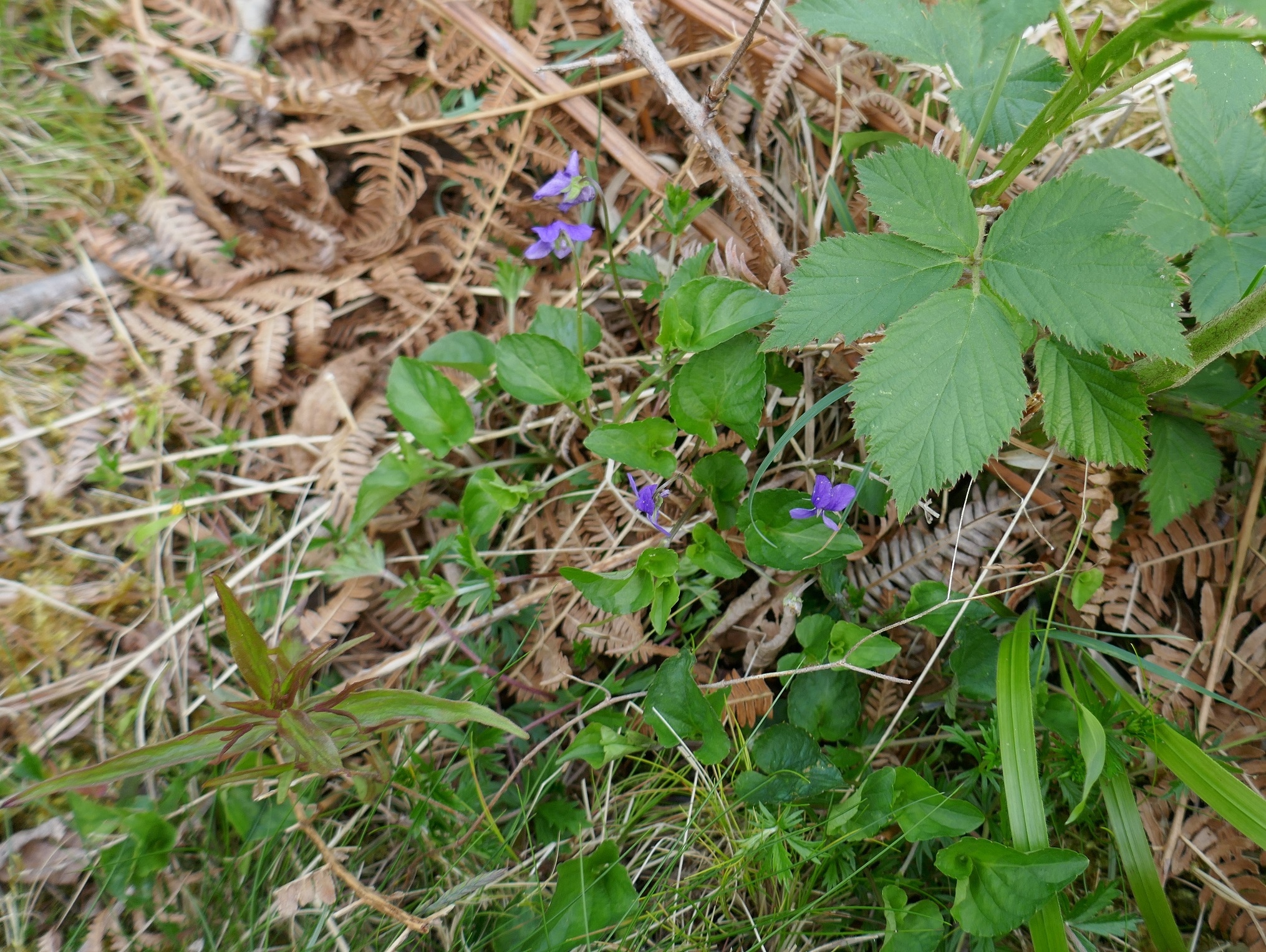
The future picture of our environment under the range of potential climate change scenarios is not clear. Predictions at the level needed to anticipate the ecological impacts on butterflies and moths may not be possible. The most immediate answer is to protect the habitats we have and restore what can be restored. Large-scale habitats with the best conservation management and the fullest range of conditions that apply to habitats are the best safeguards against our changing climate.
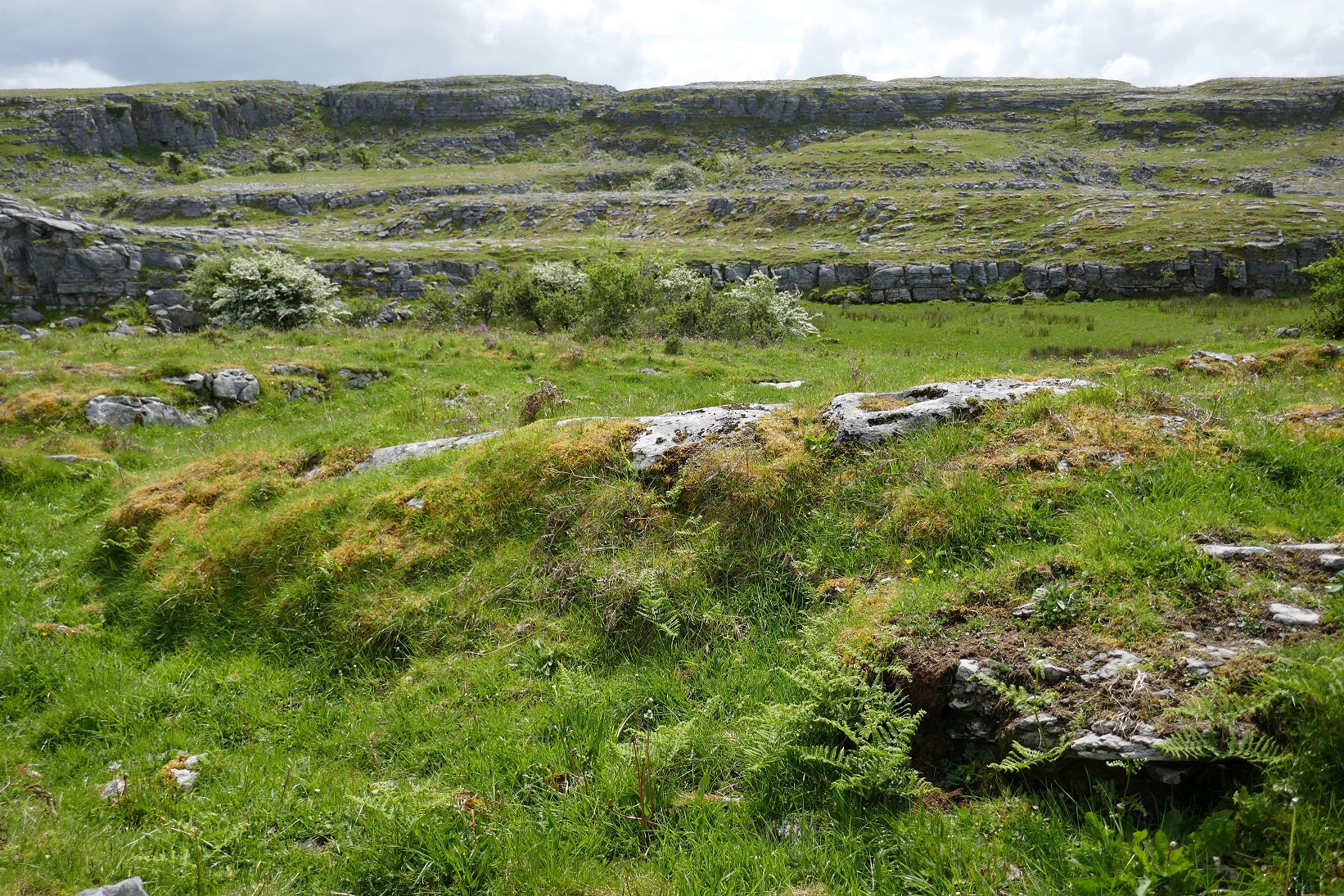
Much of the information in this article is from The Irish Butterfly Book by Jesmond Harding. For more information about the way climate and related factors are hitting our butterflies, read The Irish Butterfly Book. Contact the author by email: jesmondmharding@gmail.com
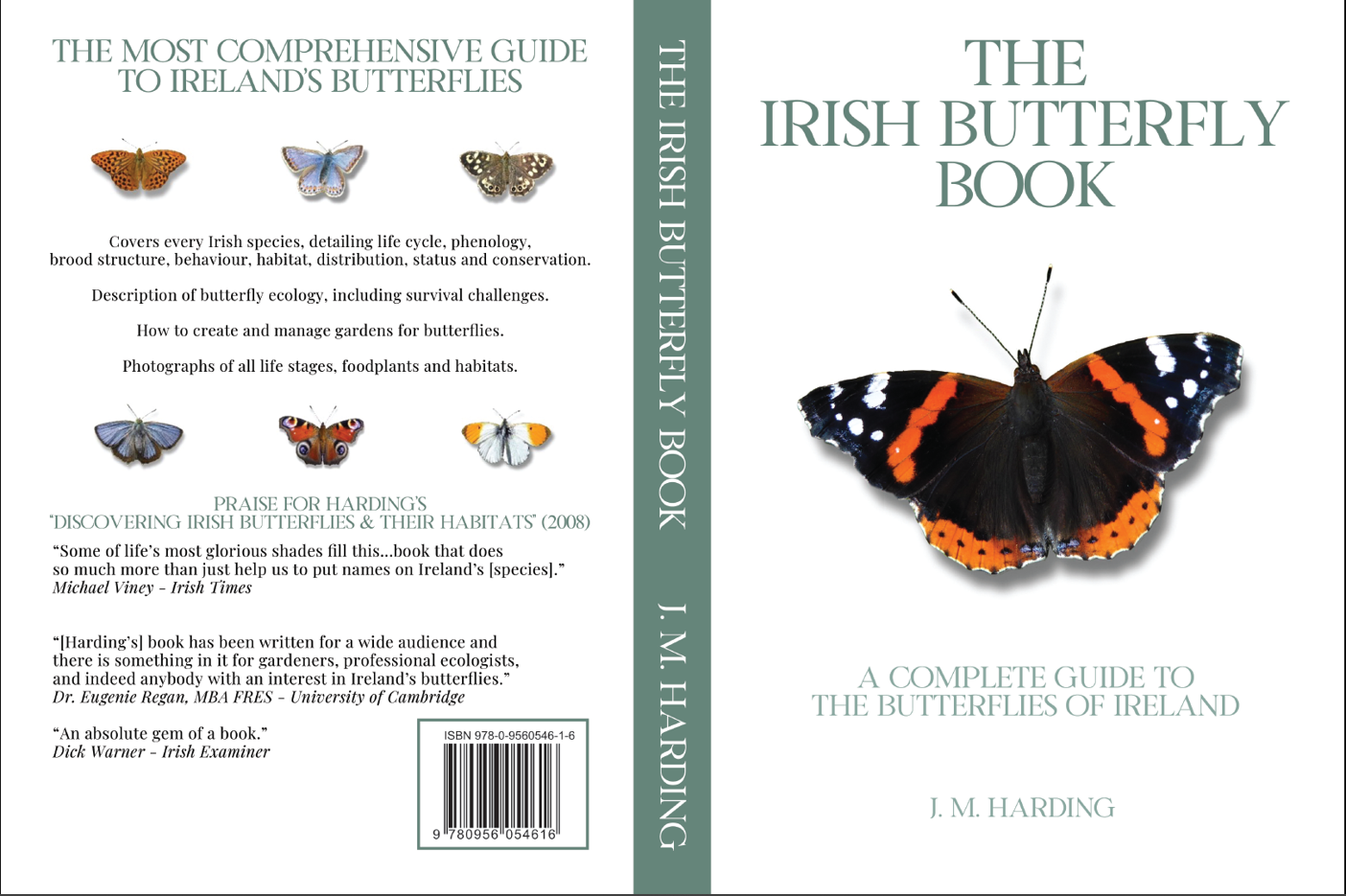
All photos © J. Harding
References
BBC, 2023. Climate change: World’s hottest day since records began. Available at https://www.bbc.com/news/science-environment-66104822 accessed 05 July 2023
Braschler, B. & Hill, J.K. 2007, “Role of larval host plants in the climate-driven range expansion of the butterfly Polygonia c-album”. The Journal of animal ecology, vol. 76, no. 3, pp. 415-423.
Butterfly Conservation UK , 2023. First Sightings 2021 and previous. Online at https://butterfly-conservation.org/butterflies/first-butterfly-sightings-2023/first-sightings-2021-previous accessed 03 July 2023.
Eeles, P. (2019) Life Cycles of British & Irish Butterflies. Pisces Publications, Berkshire.
Ellis, S., Wainwright, D., Dennis, E.B., Bourn, N.A.D., Bulman, C.R., Hobson, R., Jones, R., Middlebrook, I., Plackett, J., Smith, R.G., Wain, M. & Warren, M.S. 2019, “Are habitat changes driving the decline of the UK’s most threatened butterfly: the High Brown Fritillary Argynnis adippe (Lepidoptera: Nymphalidae)?”, Journal of insect conservation, vol. 23, no. 2, pp. 351-367.
Gamberale-Stille, G., Söderlind, L., Janz, N. & Nylin, S. 2014, “Host plant choice in the comma butterfly-larval choosiness may ameliorate effects of indiscriminate oviposition: Host plant choice in the comma butterfly”, Insect science, vol. 21, no. 4, pp. 499-506.
Harding, J. (2021) The Irish Butterfly Book. Privately Published, Maynooth.
Hull, M (2019). Where have all the Small Tortoiseshell gone? (online) https://hertsmiddx-butterflies.org.uk/SmallTortoiseshells.pdf (Accessed 04 April 2020).
Met Éireann, 2023. TRANSLATE One Climate Resource for Ireland. Online at https://www.met.ie/science/translate accessed 02 July 2023.
McDermott Long, O. An investigation into the vulnerability of UK butterflies to extreme climatic events associated with increasing climate change. Doctoral thesis, University of East Anglia, 2017.
Nylin, S. (1989). “Effects of changing photoperiods in the life cycle regulation of the comma butterfly, Polygonia c-album (Nymphalidae)”. Ecological Entomology, 14(2), 209–218. doi:10.1111/j.1365-2311.1989.tb00771.x
Oates, M. (2015) In Pursuit of Butterflies. Bloomsbury, New York.
RTE, 2023. Climate change to bring more extreme weather to Ireland, says Met Éireann. Online at https://www.rte.ie/news/weather/2023/0630/1391944-ireland-climate-change/ accessed 02 July 2023
Thomas, J.A. & Lewington, R. 2014, The butterflies of Britain and Ireland, Revised edition, British Wildlife Publishing, Oxford.

